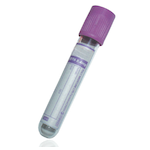Suitable Specimen Types
- Serum
- EDTA Plasma
- Li Hep Plasma
Specimen Transport
First class postSample Processing in Laboratory
Place sample in toxicology rack.Sample Preparation
None requiredTurnaround Time
3 days.Sample Stability
Keep refrigerated. 4 degrees.Amfetamine (Amphetamine)
General Information
Amfetamine (Amphetamine) is a sympathomimetic phenethylamine derivative with prominent central stimulant activity. The compound was first synthesized in 1887 and has been used since 1935 in the treatment of obesity, narcolepsy and hypotension. Amfetamine is frequently abused for its stimulant effects and may be self-administered either orally or by intravenous injection in amounts of up to 2000 mg daily by tolerant addicts. It is also a metabolite of a number of other drugs including fenethylline, fenproporex and methamfetamine.
Amfetamine is largely inactivated during metabolism, being deaminated to phenyacetone, which is subsequently oxidized to benzoic acid and excreted as conjugates. However, a small amount is converted by oxidation to norephedrine, and this compound and its parent are p-hydroxylated. These latter three metabolites are pharmacologically active and may contribute to the effects of the drug, especially in chronic usage. Around 30% of amfetamine is excreted unchanged in urine, but this may increase to 74% in acid urine and decrease to 1% in alkaline urine.
Excessive doses of amfetamine can cause restlessness, anxiety, confusion, irritability, hyperactivity and aggressive or bizarre behavior. Chronic useage is associated with a high incidence of weight loss, hallucinations and paranoid psychosis. Myocardial infarction, aortic dissection, ischaemic stroke and cerebral haemorrhage have been described in users of the drug.
Please note, this assay is for the quantitative determination of amfetamine in blood. Stimulant use (including MDMA, MDA, MDEA, amfetamine, methamfetamine, 4MEC, MDPV, MMC & BZP) may also be detected via our urinary Drugs of Abuse Screen by LC-MS/MS.
Patient Preparation
No patient preparation required.
Notes
Amfetamine measured by LC-MS/MS
Reference Range
Toxic range: > 0.2 mg/L. Amfetamine concentrations above 0.50 mg/L have been linked to fatalities, but in regular amfetamine users, blood concentrations may range up to 3 mg/L without toxic effects. (Schulz et al. Critical Care 2012, 16:R136).
Specifications
- EQA Scheme?: Yes
- EQA Status: LGC QUARTZ, LGC CLIN TOX
